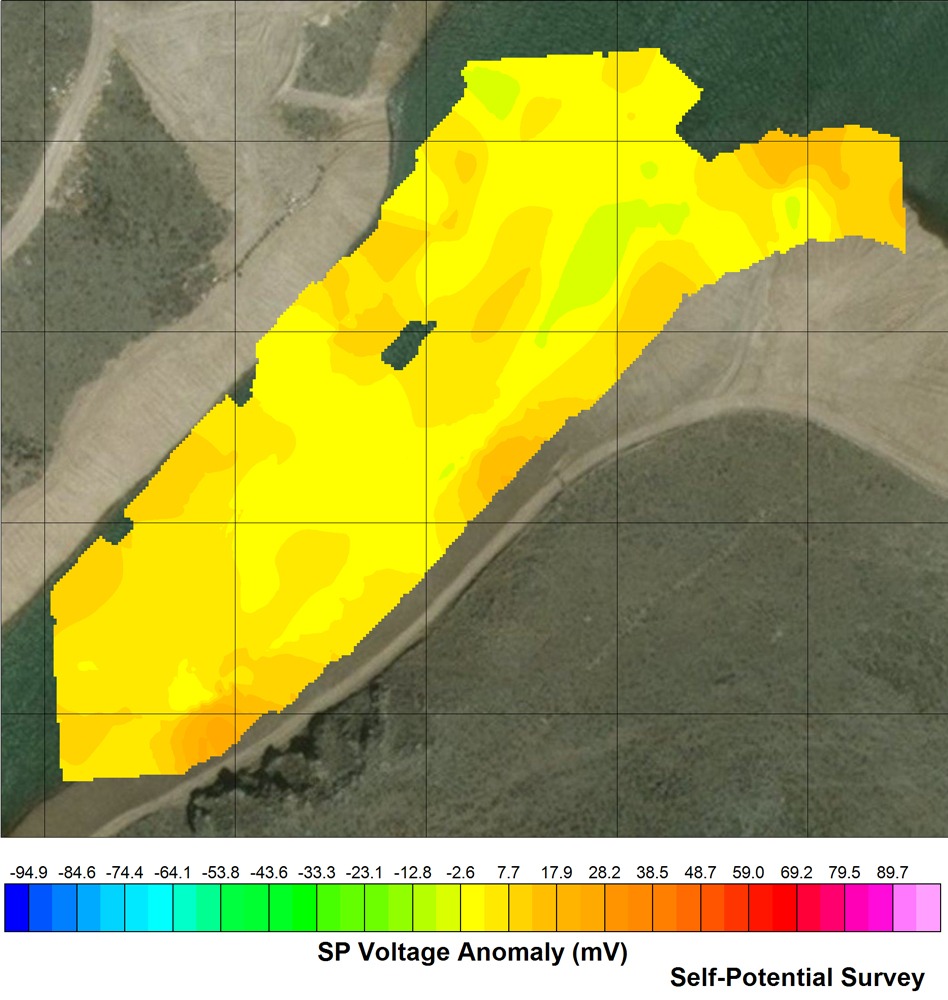Self-Potential
The Self-Potential (SP) method measures naturally occurring electric fields generated by one of two phenomenon: corrosion or weathering of ferrous minerals or the flow of groundwater. The electric potential field is very small, typically millivolts in scale, but can be measured over small or large areas / sites.
For engineering, environmental, or groundwater geophysics, the SP method is used almost exclusively to map the flow of groundwater through porous materials. SP is routinely used to map preferential flow paths for seepage through embankment dams or levees. Additionally, it can be used to map the path of flow for seeps observed at the ground surface downstream of cut-off walls, abandoned mines, or naturally occurring springs. The SP method is extremely effective if measurements can be obtained during, for example in reservoirs, high- and low- pool conditions when the only change in the subsurface is the head or gradient on the flow condition.
SP can also be called the ‘Streaming Potential’ and in NDT it is commonly known as the ‘Corrosion Potential’ (of rebar in concrete). SP results can be quite valuable when used in conjunction with ERT.

Applicable On:
Soil
Rock
Test For:
Mapping preferential flow paths through man-made structures (i.e. dams or levees)
Around natural seeps and springs
Mineral exploration
Structural, Pavement, & Tunnel Methods
Foundation Depth & Integrity Methods
Geophysical Methods
Seismic
Electrical Resistivity
Electromagnetics
Ground Penetrating Radar
